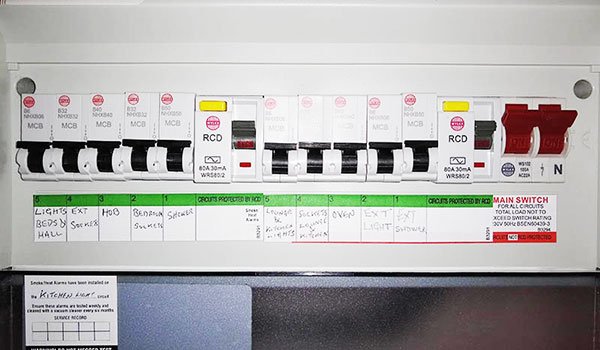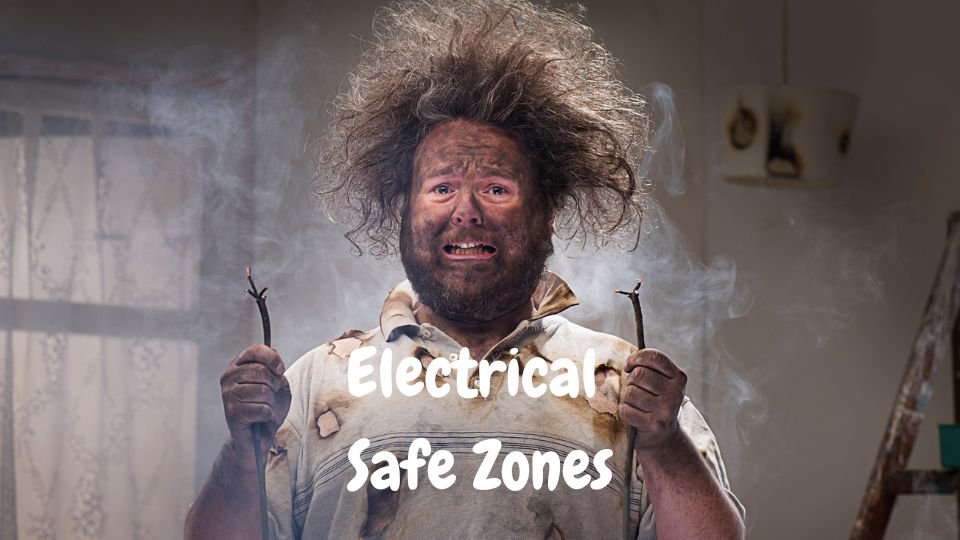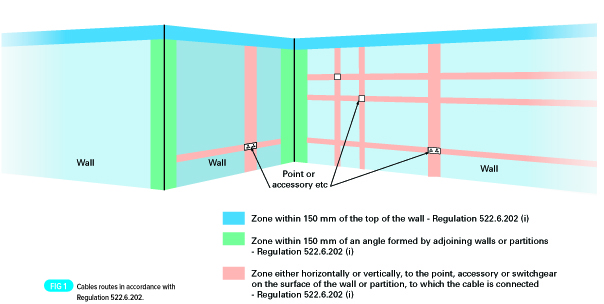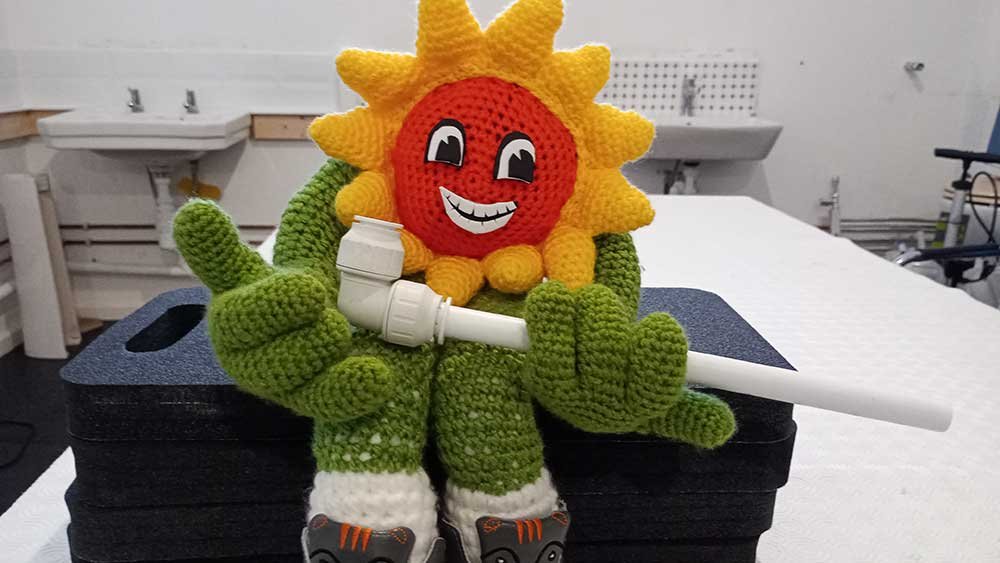


Consumer Units. What you need to know.
Consumer Units. What you need to know.
What is a Consumer Unit?
You might hear a Consumer Unit called different things: a Distribution Board, a Fuse Box—whatever. In the trade, it’s mostly called a Consumer Unit, or just CU for short, so let’s stick with that to keep it simple.
I’ll try not to bore you to sleep here, because this stuff matters, but I get it—electrics aren’t exactly thrilling.
No matter what you call it, a CU is what distributes electricity around your home. At its core, a CU should have a Main Switch, which lets you shut everything off if needed. You’ll also find various fuses or MCBs (Miniature Circuit Breakers) that control each circuit in your home.
If you’re lucky (and lots of people are these days), you might also have an RCD. If you’ve got two, great. If each circuit has its own, you’ve hit the jackpot.
Consumer Units come in all sorts of shapes, sizes, and safety levels. We’ll run through some of them below.
Keep reading…
1. Consumer Unit with Ceramic Rewireable Fuses

These are old-school and, honestly, look pretty cool (if you’re into that sort of thing). But they belong in a museum, not in your home. If you have one, it’s a good sign that you haven’t had certified electrical work done in ages, so call an electrician.
What it does:
This CU protects against circuit overloads—the fuse wire inside will break if there’s too much demand.
What it doesn’t do:
It won’t protect you from getting shocked or seriously hurt if there’s an earth fault.
What’s an Earth Fault?
It’s when an electrical current tries to escape to the ground (Earth). It is often caused by cutting a cable (e.g. by drilling into it) or a sudden appliance fault.
2. Consumer Unit with Rewireable Fuses

These are still fairly common and do the basics.
What it does:
It stops you from overloading circuits by tripping a fuse. You can reset it by pressing a button or flipping a switch—way easier than the older CUs.
What it doesn’t do:
Like the older ones, it won’t protect against electrocution from an earth fault. If you’ve got one, you might need an upgrade if you’re getting electrical work done, since newer regulations prioritise safety and require RCDs.
What is an RCD?
An RCD (Residual Current Device) is a nifty safety gadget that trips when it detects an earth fault. Potentially it will save your life.
At its most basic level, it constantly monitors the current in your house. If it detects an imbalance, it assumes that the current has gone into something it shouldn’t have – you. It should trip within milliseconds. This will save your life.
3. Consumer Unit with an RCD as Main Switch

This setup has an RCD that acts as the main switch. It’s better than nothing, but if there’s a fault on any circuit, the whole thing shuts down. Not ideal if you’re halfway through cooking dinner.
What it does:
It gives you some protection against earth faults, which is a step up from the older units.
4. Consumer Unit with Two/Dual RCDs

For a while, this was the go-to upgrade. These CUs usually have a plastic casing (newer ones are metal for better fire protection) and split your circuits into two groups, each with its own RCD.
What it does:
If one circuit trips an RCD, only half your house goes down. The other RCD keeps things running, which is more convenient but still a bit of a hassle.
You can find these CUs sold cheap in DIY stores because they don’t meet current regulations any more. Don’t be tempted—it’s not a bargain.
And you shouldn’t even be thinking abut carrying out that kind of electrical work anyway.
5. Consumer Unit with Individual RCBOs

This is what electricians install nowadays to meet the latest safety standards.
What it does:
This setup has a metal casing and a Main Switch, with each circuit controlled by its own RCBO (a combined fuse and RCD). If a fault occurs, only the affected circuit is shut down, so the rest of your home stays powered. It also likely includes a Surge Protection Device (SPD) to shield sensitive electronics like TVs and computers.
It’s more expensive but offers way better protection and convenience, especially in older homes where wiring can be dodgy.
Labelling
You’ll notice that labelling on CUs can be hit or miss. It’s really handy to know which fuse or RCBO controls which circuit, especially in an emergency.
If your CU isn’t well labelled, you can fix that yourself in about an hour. Grab some clean labels and a fine-tip pen. Go through each MCB one by one—switch it off and see what stops working. Jot down what each circuit controls and label accordingly.
Keep a record of this info near the CU; it could save you a lot of hassle (or even your life) later.
Plus, it’ll make things easier for any electrician working in your home.
If you have issues with your RCD not resetting after it has tripped, check out our handy post: Help, I have no Power

Electrical Safe Zones
Electrical Safe Zones
Where is it SAFE to drill in a Wall?
This is a question we asked all the time on our DIY Courses.
Understandably, many people are worried about this. It stops them even picking up a drill.
So here’s what you need to know……..
There are 3 MAIN AREAS where you can definitely expect cables to have been run……
These areas are rather strangely called “SAFE ZONES” even though there is very little safe about them.

1. Where two walls meet
An area 150mm (6 inches) wide along the top of the wall where it meets the ceiling.
2. Horizontally either side of an Electrical Accessory
Basically this means in a straight line either side of a socket/switch/fused spur/light fitting etc. The line is the height of the socket/switch.
It runs all the way to the adjoining walls, or an obstacle, such as door or window.
Its important to note that an electrical accessory can be a lot of things, including a Consumer Unit (Fuse Box)
Its very safe to assume that there will be lots of cables running up, down and sideways around a Consumer Unit, so think very hard before you bang a nail in to put a lovely picture above the Consumer Unit.
3. Vertically above and below an Electrical Accessory
In a straight line above and below a socket/switch/fused spur/light fitting etc. The line is the width of the socket/switch/fitting. It runs all the way to the floor and ceiling.
Again the same applies to a Consumer Unit, so be very wary.
Very Important:
If the wall is less than 100mm (4 inches) thick, then the safe zones operate on both sides of the wall. Bear this in mind when you are drilling from a different room!
Very Very Important:
Electricians have very strict rules about where they can run their cables, and have to document if they haven’t been able to stick to the rules.
If you have had some electrical work carried out, it is worth checking the Electrical Certificate (if you were issued with one) as it may have some information about any deviations from the rules.
Electricians in the past did not have these rules. Cables could be, and were run in all sorts of odd places.
We have found cables run diagonally across walls, doing sudden 90 degree bends and all sorts, so beware.
If you suspect that someone in the past has carried out some electrical DIY work in your house, it is quite possible that they did not know about Safe Zones. They may have run cables wherever was most convenient for them, not always in the safest place.
If your current consumer unit does not have a functioning, healthy RCD, in fact, if you have any doubts at all,
TURN OFF THE CONSUMER UNIT BEFORE YOU DRILL
Where is it safe to drill in a Ceiling?
The rule that electricians should follow is to run the cables through the joists, as close to the centre of the joist as possible, at a depth of at least 50mm from the top and bottom of the joist. i.e 50mm from the ceiling/floor.
It is not always possible to follow this rule. There are often existing holes and notches in a joist. It is extremely likely that in the past, cables will have been run all over the place.
It is also quite possible that cables can be lying on top of plasterboard ceilings.
Because it is not always possible to run cables this way, the current electrical regulations allow cables to be run outside the zones, provided they are protected by an RCD..
If the wiring in your house is old and/or you have a Consumer Unit which does not have an RCD, then you should be even more cautious.
If you have any doubts…..
TURN OFF THE CONSUMER UNIT BEFORE YOU DRILL
Where is it safe to drill in a Floor?
As with ceilings, the rule that electricians should follow is to run the cables through the joists, as close to the centre of the joist as possible, at a depth of at least 50mm from the top and bottom of the joist. i.e 50mm from the floor.
It is not always possible to follow this rule. There are often existing holes and notches in joist, and it is extremely likely that in times past, cables have been run all over the place. It is also extremely likely that gas & water pipes have also been run under the floorboards through notches in the joists, (in which case, it is worth checking very very carefully first)
Because it is not always possible to run cables this way, the current electrical regulations allow cables to be run outside the zones, provided they are protected by an RCD.
If the wiring in your house is old and you have a Consumer Unit which does not have an RCD., then you should be even more cautious
If you have any doubts…..
TURN OFF THE CONSUMER UNIT BEFORE YOU DRILL

Essential Home Plumbing (Weekend)

More DIY Plumbing – Taps, Traps & Wastes

Essential Home Plumbing (Weekend)

Essential Home Plumbing (Weekend)

Nailing it! DIY for Beginners

Nailing it! DIY for Beginners

Using Push-fit Fittings
Speedfit Pushfit Plumbing Fittings
As those of you who have been on our Essential Home Plumbing Course will know, these Speedfit fittings are really straightforward to use.
They are great for DIY plumbing. We thought it would help to make a quick video to remind you of a couple of important tips when using the fittings.
If you still feel a bit wary about using them, or would like a bit more practice, why not sign up for one of our DIY Plumbing Courses, or check out our DIY Assist Service (we come to your home and support you with your DIY projects)